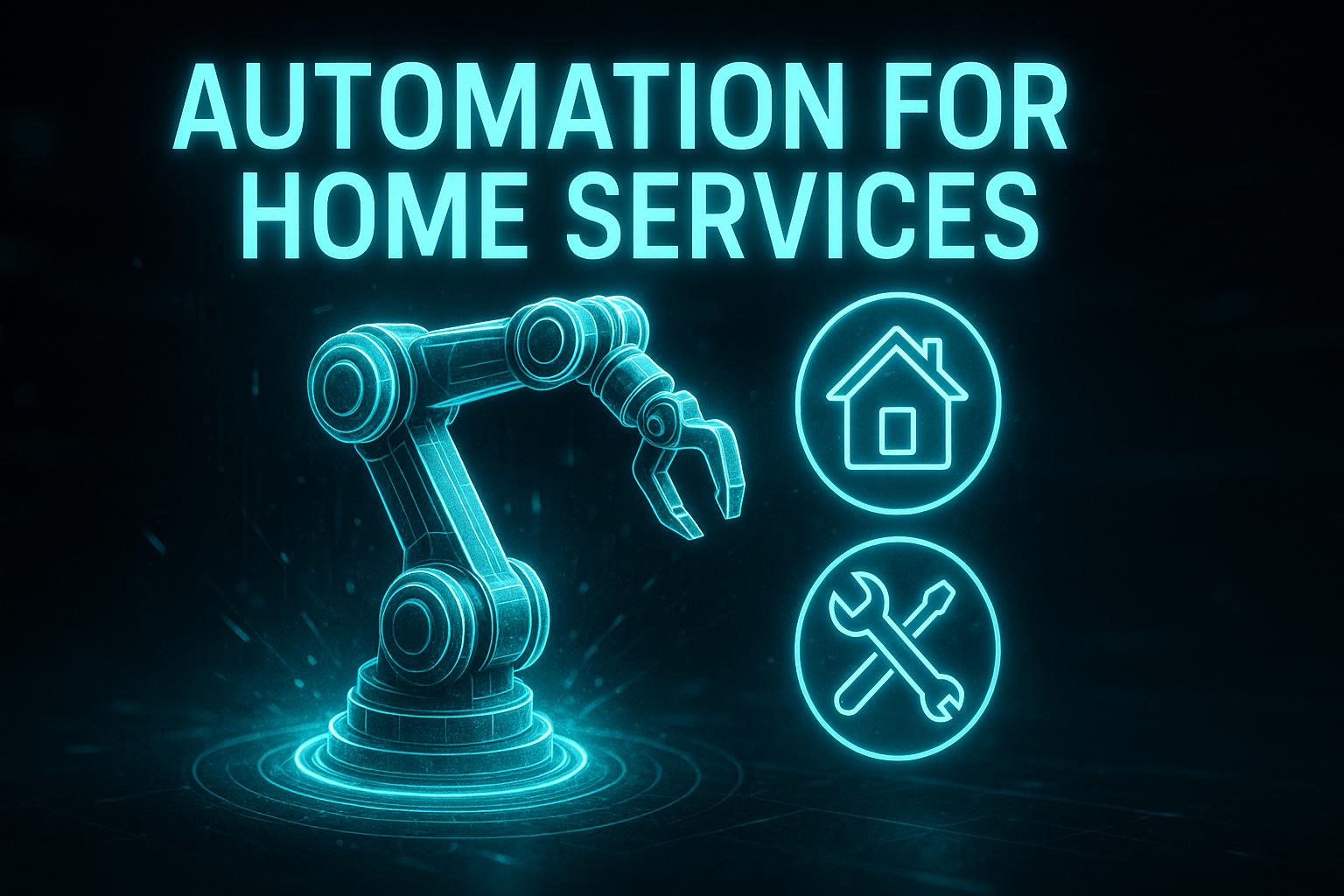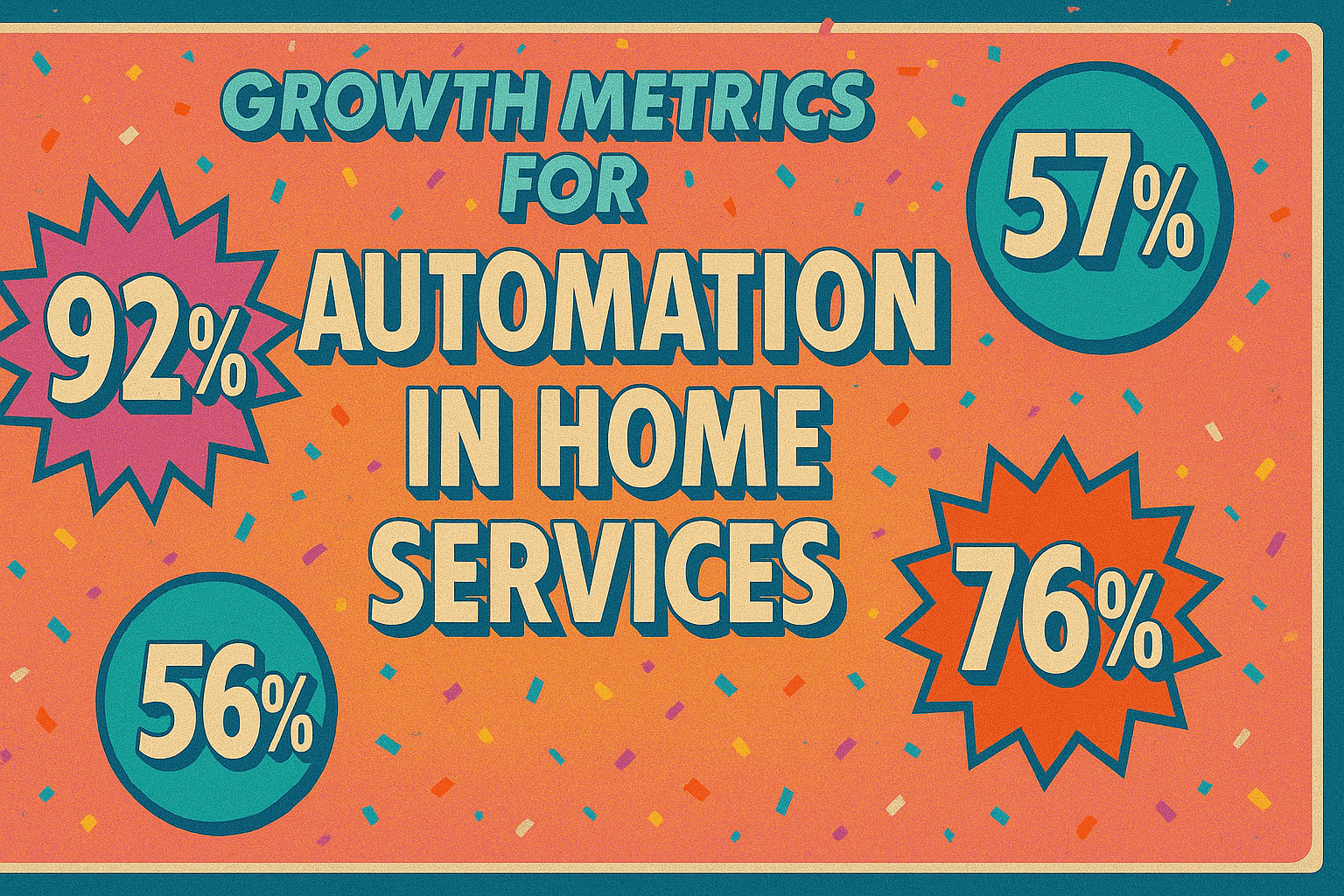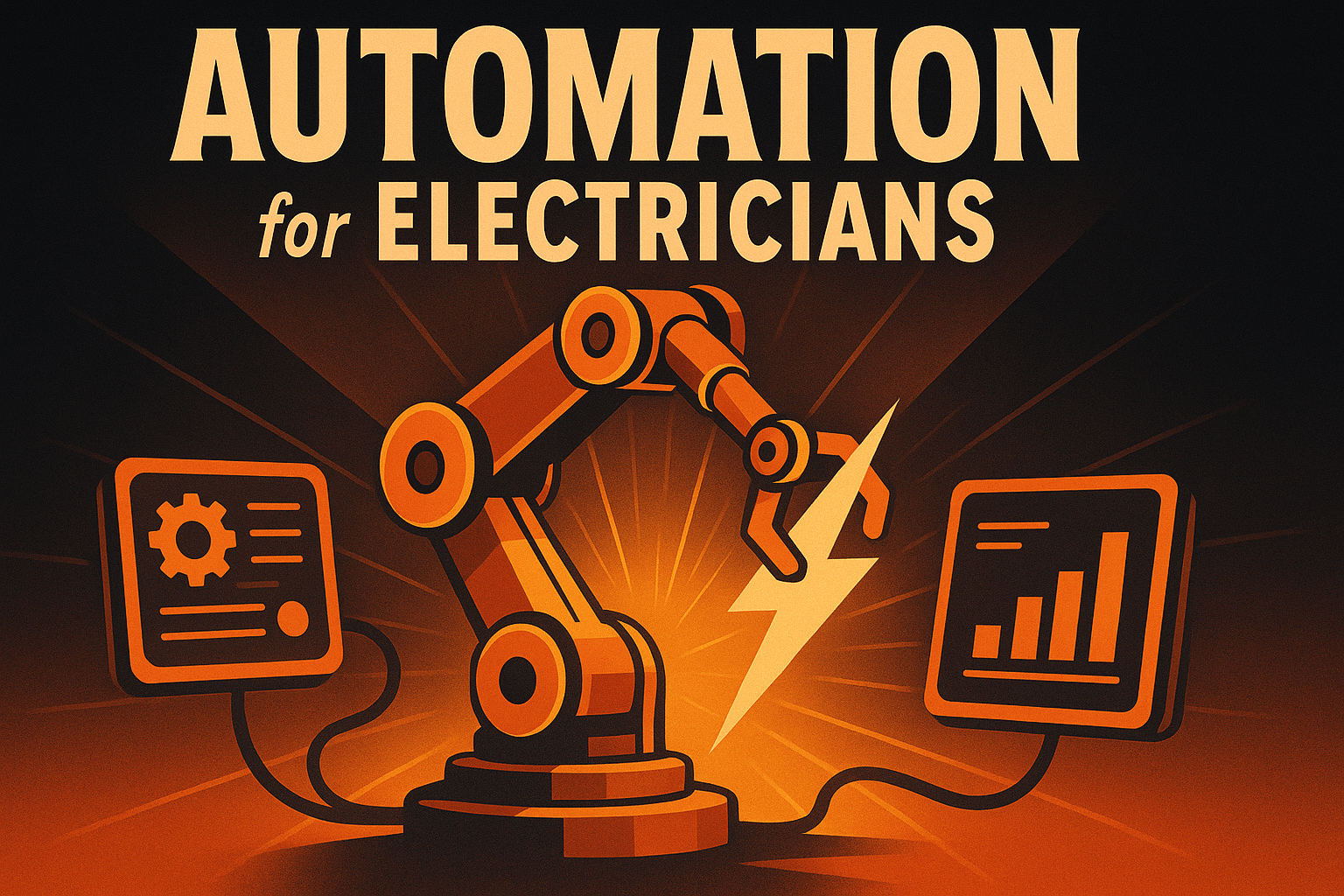Automation for Home Services: Complete 2026 Implementation Guide
by Design Delulu Editorial · October 8, 2025

In the competitive home services landscape, automation isn't just a convenience—it's the difference between scaling profitably and staying stuck in operational chaos. Whether you're running an HVAC company, plumbing business, landscaping service, or any other home services operation, manual processes are silently draining your resources, creating service gaps, and limiting your growth potential.
The stakes are higher than ever. Today's customers expect instant responses, seamless scheduling, transparent pricing, and consistent communication throughout their service journey. Meanwhile, your team is juggling phone calls, spreadsheets, dispatch logistics, and follow-ups—often missing opportunities and delivering inconsistent experiences. Automation for home services transforms this reality by connecting your systems, eliminating repetitive tasks, and creating intelligent workflows that work 24/7 to capture leads, delight customers, and maximize your operational capacity.

Why Automation is Critical for Home Services Businesses
Home services businesses face unique operational challenges that make automation particularly valuable. Unlike traditional retail or SaaS companies, you're coordinating physical appointments, managing mobile teams, handling emergency requests, and dealing with complex scheduling constraints—all while trying to deliver exceptional customer service.
The average home services business loses 15-30% of potential revenue through missed calls, delayed follow-ups, and inefficient scheduling. When a potential customer calls about a leaking pipe or broken HVAC system, every minute matters. If they reach voicemail or wait too long for a callback, they're calling your competitor. Automation ensures no lead falls through the cracks by implementing instant response systems, intelligent lead routing, and automated follow-up sequences that engage prospects immediately.
Beyond lead capture, automation transforms your operational efficiency. Technicians waste valuable time on administrative tasks like updating job statuses, collecting customer information, and coordinating with the office. Automated workflows eliminate this friction by syncing field data in real-time, triggering customer notifications automatically, and streamlining communication between your team and clients. This means your technicians focus on delivering great service while your systems handle the rest.
Core Automation Systems Every Home Services Business Needs
Building an effective automation infrastructure requires integrating several key systems that work together seamlessly. These foundational elements form the backbone of an efficient, scalable home services operation.
Lead Capture and Response Automation
The moment a potential customer expresses interest—whether through your website, phone call, or social media—your automation should kick in. Implement web forms that instantly send lead data to your CRM, trigger immediate email or SMS confirmations, and alert your team for priority follow-up. For phone inquiries, AI-powered call routing ensures calls reach the right department, while missed call automation sends instant text messages acknowledging the customer and setting expectations for response time.
Scheduling and Dispatch Automation
Manual scheduling is a bottleneck that limits your growth. Modern automation platforms integrate with your calendar, customer database, and technician availability to enable real-time online booking. Customers can view available time slots, select their preferred appointment, and receive automatic confirmations—all without staff intervention. Behind the scenes, intelligent dispatch algorithms optimize technician routes based on location, skills, and job requirements, reducing drive time and increasing daily capacity.
Customer Communication Workflows
Consistent communication builds trust and reduces no-shows. Automated workflows send appointment reminders via SMS and email 24 hours and 2 hours before service. When your technician is on the way, customers receive notifications with a photo, bio, and estimated arrival time. After service completion, automated follow-up sequences request reviews, check satisfaction, and promote maintenance plans—turning one-time customers into recurring revenue.

Measuring Success: Analytics and Tracking for Home Services Automation
Automation without measurement is just technology expense. The real power comes from tracking performance, identifying bottlenecks, and continuously optimizing your workflows based on data.
Essential Metrics to Track
Start by establishing comprehensive tracking across your customer journey. Implement event tracking in Google Analytics 4 to monitor key actions: form submissions, phone clicks, booking completions, and customer portal logins. Server-side tagging ensures accurate data collection even with browser privacy restrictions and ad blockers, giving you a complete picture of customer behavior.
Your measurement framework should include conversion metrics at each funnel stage: website visitors to leads, leads to booked appointments, appointments to completed jobs, and completed jobs to repeat customers. Track lead response time obsessively—studies show that responding within 5 minutes increases conversion rates by 400% compared to 30-minute responses. Automation makes this possible by eliminating human delay from your initial response.
Building Your Single Source of Truth
Consolidate data from all your tools—CRM, scheduling software, accounting systems, and marketing platforms—into unified Looker Studio dashboards. These real-time dashboards should answer critical questions at a glance: What's your cost per lead by channel? What's your average job value by service type? Which marketing campaigns generate the highest lifetime value customers? How efficiently are your technicians being utilized?
Attribution modeling connects your marketing investments to actual revenue. Multi-touch attribution shows which touchpoints influence the customer journey, whether it's a Google search, social media ad, email campaign, or review site. This visibility allows you to allocate your marketing budget to channels that actually drive profitable growth rather than guessing based on vanity metrics.
Implementation Roadmap: From Strategy to Execution
Successful automation implementation follows a structured approach that minimizes disruption while maximizing impact. Here's how to roll out automation in your home services business effectively.
Phase 1: Discovery and Goal Setting
Begin by mapping your current processes and identifying pain points. Where are leads being lost? What manual tasks consume the most time? Which communication gaps frustrate customers? Involve your team in this discovery—they know where the friction exists. Establish clear, measurable goals like reducing response time to under 5 minutes, increasing online booking rate to 40%, or improving technician utilization by 20%.
Phase 2: Blueprint and Architecture Design
Design your automation architecture before building anything. Document each workflow: what triggers it, what actions occur, what data gets captured, and what happens next. Map system integrations between your website, CRM, scheduling platform, payment processor, and communication tools. Create a comprehensive tracking plan that defines every event you'll measure and how it connects to business outcomes.
Phase 3: Build, Test, and Deploy
Implement automation in manageable chunks rather than attempting a complete overhaul. Start with high-impact, low-complexity wins like automated appointment reminders or lead response confirmations. Thoroughly test each workflow before launching to customers—nothing damages trust faster than broken automation. Monitor closely during the first weeks, collecting feedback from both customers and staff to identify issues and opportunities for refinement.
Phase 4: Optimize and Scale
Treat automation as an ongoing optimization project, not a one-time implementation. Review dashboard data weekly to spot trends and anomalies. A/B test message timing, communication channels, and workflow logic to improve performance. As you prove ROI on initial automations, expand to more complex workflows like dynamic pricing, predictive maintenance reminders, or AI-powered customer service chatbots.

Industry-Specific Automation Strategies
Different home services verticals benefit from tailored automation approaches that address their unique operational patterns.
HVAC and Plumbing: Emergency Response Automation
For emergency services, speed is everything. Implement priority routing that identifies urgent keywords in contact forms or during phone calls, triggering immediate dispatch protocols. Automated emergency pricing calculators provide instant quotes for common urgent repairs, reducing friction in the booking process. Seasonal maintenance automation sends proactive reminders before peak seasons, converting emergency customers into preventive maintenance clients.
Landscaping and Lawn Care: Recurring Service Automation
Build subscription-style service models with automated recurring scheduling, invoicing, and payment processing. Weather-triggered workflows automatically reschedule rain-affected appointments and notify customers of changes. End-of-season automation sequences promote add-on services like aeration, fertilization, or holiday lighting installation based on past purchase patterns.
Cleaning and Maintenance: Quality Assurance Automation
Post-service automation requests immediate feedback while the service is fresh in customers' minds. Photo documentation workflows have technicians automatically upload before/after images that get sent to customers as proof of quality. Subscription management automation handles plan changes, service pauses, and billing updates without staff intervention.
Common Pitfalls and How to Avoid Them
While automation delivers tremendous value, poor implementation can create new problems. Avoid these common mistakes that plague home services automation projects.
Over-automation removes the human touch: Customers still want to feel valued and heard, not processed by robots. Balance efficiency with personalization by keeping automation behind the scenes while maintaining human touchpoints for complex issues, complaints, or high-value interactions.
Fragmented systems create data silos: Implementing tools that don't integrate properly leads to duplicate data entry, inconsistent information, and frustrated teams. Prioritize platforms with robust APIs and pre-built integrations, or invest in middleware solutions that connect disparate systems.
Setting and forgetting automation: Workflows that worked perfectly at launch can become ineffective as your business evolves. Customer preferences change, new competitors emerge, and seasonal patterns shift. Schedule quarterly automation audits to review performance, update messaging, and optimize logic.
Inadequate staff training: The best automation fails if your team doesn't understand how to use it or why it matters. Invest in comprehensive training that covers not just the mechanics but the strategic purpose behind each workflow. Create documentation and provide ongoing support as systems evolve.
Frequently Asked Questions
Let’s level up your Home Services business
Need services that actually move the needle for Home Services? See our approach, pricing, and timelines—then book a quick call.
Additional Resources
- Book a Strategy Call
Schedule a free 30-minute consultation to discuss your home services automation needs, review your current workflows, and get a custom implementation roadmap.
- View Our Portfolio
Explore real automation implementations for home services businesses including HVAC companies, plumbing services, and landscaping operations with documented results and ROI metrics.
- Free Automation Tools
Access free calculators, templates, and diagnostic tools including ROI calculators, workflow mapping templates, and automation readiness assessments for home services businesses.
Related Reading

Discover how automation for electricians streamlines scheduling, invoicing, lead tracking, and customer follow-ups to boost revenue and efficiency. Get started today.

Discover how automation streamlines furniture & home decor operations with GA4 tracking, attribution modeling, and data-driven dashboards. Get your 90-day implementation roadmap.
